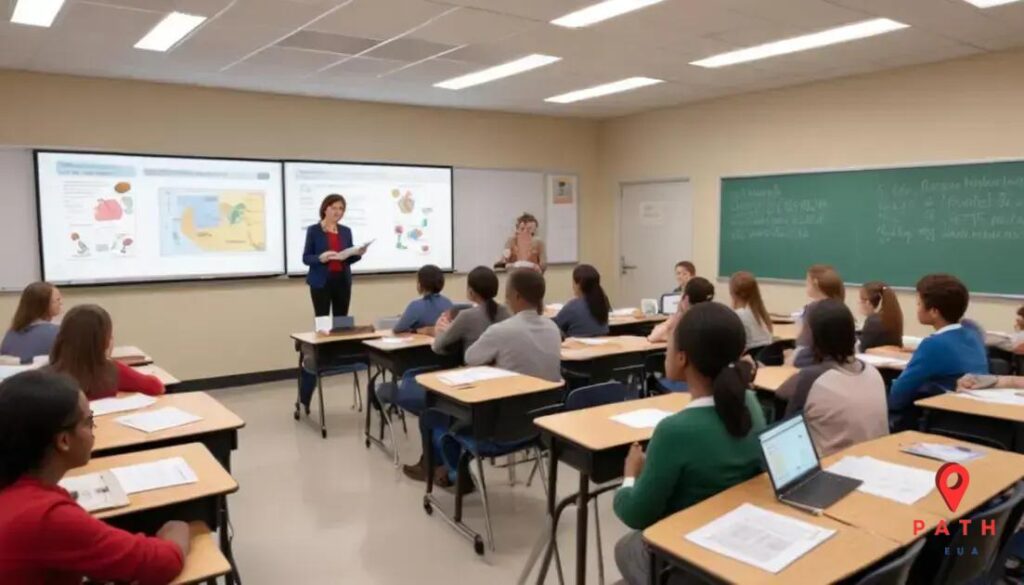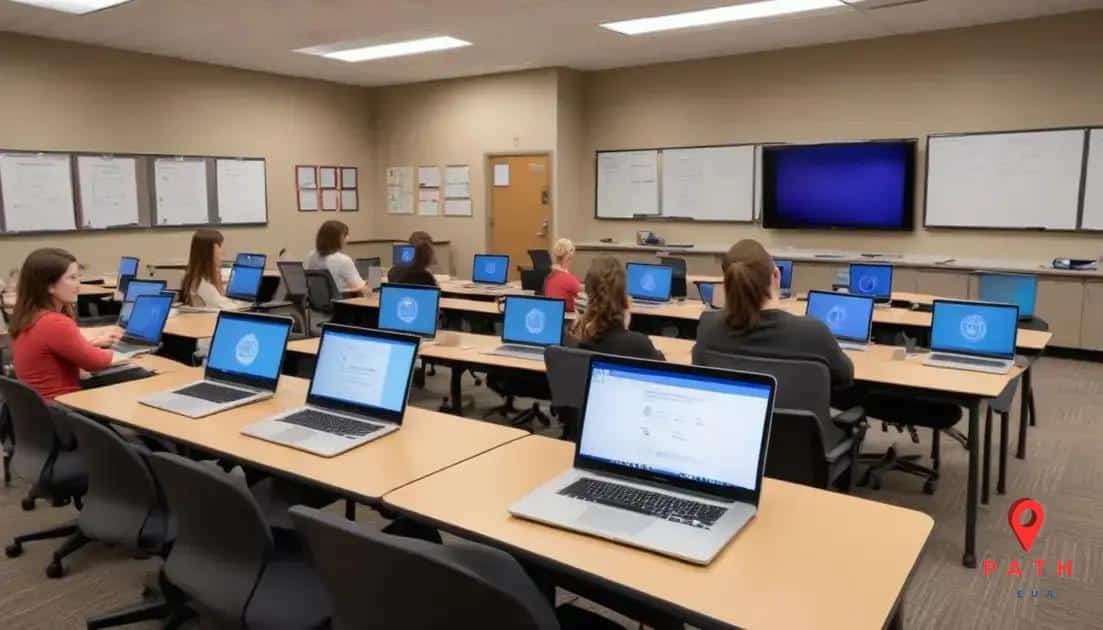Impact of budget cuts on teacher training programs

Anúncios
The impact of budget cuts on teacher training includes reduced resources and opportunities for professional development, leading to potential declines in educational quality and teacher effectiveness.
Impact of budget cuts on teacher training reveals a complex issue that touches on the quality of education. Have you ever wondered how financial decisions shape the future of our educators? Let’s dive in.
Understanding budget cuts in education
Understanding budget cuts in education is crucial for grasping how they affect teacher training. These cuts can lead to reduced resources, fewer training sessions, and even layoffs. When budgets are tight, schools often have to make tough choices that impact the quality of education.
Anúncios
Financial policies at the state and federal levels directly influence the funding available for and the sustainability of teacher training programs. It’s essential to recognize how these policies translate into real-world effects for educators.
Key Reasons for Budget Cuts
- Economic downturns affect state and local tax revenues.
- Policy shifts prioritize other spending areas over education.
- Demographic changes can lead to shifts in funding distribution.
Ultimately, these budget cuts can undermine the support teachers need to succeed and negatively impact student outcomes. For more detailed statistics and analysis, refer to the National Education Association’s website.
Anúncios
| Topic | Key Insight | Consequence |
|---|---|---|
| Budget Cuts | Reduced education funding | Fewer training programs |
| Policy Shifts | Reallocation of funds | Training deprioritized |
| Teacher Preparation | Less professional development | Lower teacher effectiveness |
| Mentorship Loss | Support for new teachers cut | Decreased teacher confidence |
| Skill Development | Limited training opportunities | Outdated teaching techniques |
| Online Training | Webinars and e-learning tools | Flexible and low-cost learning |
| Peer Learning | Teachers support each other | Collaborative skill sharing |
| Micro-credentials | Focused skill certifications | Targeted professional growth |
| University Partnerships | Collaboration with colleges | Access to shared resources |
Consequences for teacher preparation
The consequences of budget cuts on teacher preparation are significant and far-reaching. Educators often find themselves without essential training and development opportunities, which impacts their effectiveness in the classroom.
As funding decreases, many programs that support new teachers, such as mentoring and professional development, are reduced or eliminated. This leaves teachers without crucial guidance during their formative years.
Impacts on Teacher Skills
When training is cut, teachers may struggle with important skills, such as classroom management and instructional techniques.
- Teacher confidence may decrease due to lack of support.
- Innovative teaching methods may not be explored.
- Overall job satisfaction can decline, leading to higher turnover rates.
Additionally, without adequate training, teachers may not be prepared to address the diverse needs of their students. For more insights on teacher readiness, check out the National Council on Teacher Quality.
Strategies to mitigate training deficits

Implementing strategies to mitigate training deficits is essential for maintaining the quality of education amid budget cuts. Schools need to be proactive in finding creative ways to support teacher development.
One effective strategy is to form partnerships with local universities. This way, schools can access resources and expertise to enhance teacher training without incurring significant costs.
Utilizing Online Resources
Another approach is to leverage online professional development. Many platforms offer courses that teachers can access at their convenience.
- Webinars can connect teachers with experts.
- Online courses can cover a wide range of topics, from classroom management to new technologies.
Collaborating with other districts can also lead to shared resources and training programs, maximizing benefits while minimizing expenses. For more insights, visit the Department of Education’s website.
The role of alternative training methods
The role of alternative training methods is becoming increasingly important in the face of budget cuts in education. Traditional methods may not always be sufficient, so exploring new approaches can support teacher development effectively.
One popular alternative is peer-to-peer learning. This method allows teachers to share knowledge and skills with one another, creating a collaborative environment.
Benefits of Alternative Training Methods
Alternative training methods can help bridge the gap caused by budget cuts.
- They can be more cost-effective than traditional training programs.
- Flexibility allows teachers to learn at their own pace.
- Innovative practices can lead to improved teaching strategies.
Utilizing digital resources, such as online courses and webinars, can also provide valuable training opportunities. For further insights on alternative training options, visit the International Society for Technology in Education.
Future outlook for teacher training amid cuts
The future outlook for teacher training amid budget cuts is a topic of great concern. As funding decreases, the landscape of teacher education is changing rapidly, which can have lasting effects on the classroom.
Innovations in training methods may emerge as schools seek to adapt. For example, combining traditional teaching with technology-based solutions can enhance accessibility and efficiency in professional development.
Emerging Trends to Watch
Several trends may shape the future of teacher training, especially in response to budget constraints.
- Increased reliance on online training platforms that offer flexible access.
- Focus on micro-credentialing to provide targeted skills development.
- Collaboration among schools, organizations, and universities to pool resources for teacher training.
As schools navigate financial challenges, the emphasis on effective and efficient training will be crucial. For more insights on future trends, you can visit the National Education Association.
Understanding the impact of budget cuts on teacher training
Budget cuts in education significantly affect teacher training and preparation. As we explored, these cuts can lead to reduced resources, limited development opportunities, and an increased reliance on alternative training methods.
However, by adopting innovative strategies and focusing on collaboration, schools can still provide valuable support to educators. Looking ahead, it’s essential to adapt and embrace new technologies so that teachers receive the training they need to succeed in their classrooms.
Ultimately, addressing these challenges is vital not just for teachers but also for the students they serve. A strong foundation in teacher training will help foster a better learning environment and contribute to student success.